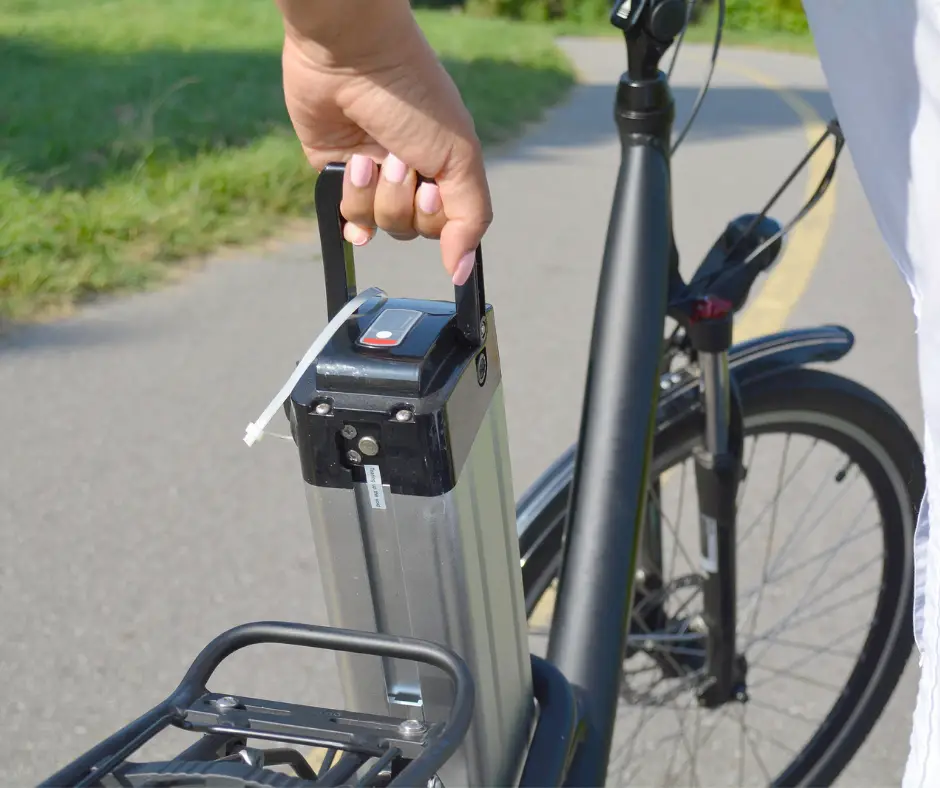An electric bike, also known as an e-bike, is a bicycle equipped with an electric motor to assist the rider’s pedaling. E-bikes have grown in popularity in recent years due to their combination of convenience and sustainability. They allow riders to tackle challenging terrain, cover greater distances, and enjoy longer rides without the physical strain of traditional cycling.
Being able to charge an electric bike in the backcountry is crucial for riders who want to explore remote areas and take extended adventures. In the backcountry, there are limited options for charging and limited access to power sources, making it important for riders to plan ahead and bring the necessary equipment to keep their e-bikes charged.

This blog post provides a comprehensive guide on how to charge an electric bike in the backcountry. The post will explore the different options available for charging, the tips and tricks for safe and effective charging, and the importance of being well-equipped for backcountry adventures. This information will be valuable for both experienced e-bike riders and those who are new to the sport.
The Charging Requirements for Electric Bikes
Electric bikes have become a popular mode of transportation and recreation, but to make the most of your electric bike, it is important to understand its charging requirements. The following information covers the different types of batteries in electric bikes, charging times and ranges, voltage requirements, and compatibility.
Types of Batteries in Electric Bikes
Either a lead-acid battery or a lithium-ion battery powers electric bikes. Lead-acid batteries are more affordable, but have a shorter lifespan and require more maintenance compared to lithium-ion batteries. Lithium-ion batteries, on the other hand, are lighter, more durable, and have a longer lifespan. However, they are also more expensive.
Charging Times and Range
The charging time for an electric bike depends on the type and capacity of the battery. Lithium-ion batteries usually take 2 to 6 hours to fully charge, while lead-acid batteries take 6 to 8 hours. The range of an electric bike also depends on the battery type and capacity, but it can typically range from 20 to 80 miles on a single charge.
Voltage Requirements and Compatibility
Electric bikes typically use a 36V or 48V battery, and it is important to ensure that any charging equipment you purchase is compatible with your electric bike’s voltage requirements. Overcharging or undercharging a battery can lead to reduced performance and lifespan, so it is crucial to choose a charger that is compatible with your electric bike’s voltage requirements.
Overall, understanding the charging requirements for your electric bike is crucial for ensuring optimal performance and longevity. Whether you choose a lead-acid or lithium-ion battery, make sure to consider the charging time, range, and voltage compatibility when choosing charging equipment.
What are the Options for Charging an Electric Bike in the Backcountry?
Charging an electric bike in the backcountry can be a challenge, but with the right equipment, it can be done efficiently and easily. There are several options available for charging electric bikes, including portable battery packs, solar panels, RV DC sources, and dynamo systems. In this section, we’ll explore each of these options and compare them based on cost, portability, and efficiency.
Portable Battery Packs
A portable battery pack is a small, rechargeable device that can be used to charge an electric bike. These battery packs are easy to transport and can be used to quickly charge your bike’s battery. They are also relatively cheap and widely available. However, they do have a limited capacity, so you may need to carry multiple packs if you plan on spending a lot of time in the backcountry.
Solar Panels
Solar panels are a great option for charging an electric bike in the backcountry, especially if you’re going to be away from civilization for an extended period of time. They are efficient, environmentally friendly, and can be used to charge your bike’s battery during the day while you’re riding. However, they can be expensive and can take up a lot of space when packed. They also require clear access to the sun, which can be limited in some areas.
RV DC Source
If you’re traveling with an RV or camping vehicle, you may be able to use an RV DC source to charge your electric bike. This option is convenient, as you can simply plug your bike into your vehicle’s battery. However, this may not be an option if you’re traveling on foot or with a smaller vehicle.
Dynamo Systems
A dynamo system is a device that generates electricity while you’re riding your electric bike. This can be a great option for charging your bike, as it eliminates the need to carry additional charging equipment. However, dynamo systems can be expensive, and they may not generate enough power to fully charge your bike’s battery during a long backcountry trip.
Comparison of Options
When it comes to charging an electric bike in the backcountry, there is no one-size-fits-all solution. The best option for you will depend on your specific needs, such as the length of your trip, the availability of power sources, and your budget.
Portable battery packs are the most affordable and portable option, but they have a limited capacity. Solar panels are environmentally friendly and efficient, but can be expensive and require clear access to the sun. RV DC sources are convenient if you have an RV or camping vehicle, but may not be an option for everyone. Dynamo systems are a great option if you’re looking for a more sustainable option, but they can be expensive and may not generate enough power.
However, when choosing an option for charging your electric bike in the backcountry, consider your specific needs, budget, and preferences. With the right equipment and a little preparation, you can enjoy your backcountry adventures with the peace of mind that comes from having a fully charged electric bike.
Tips for Safe and Effective Charging in the Backcountry
When it comes to charging an electric bike in the backcountry, safety should always be a top priority. Here are some tips to ensure a safe and effective charging experience:
Choosing a safe and protected charging location
- Look for a shaded area to reduce the risk of overheating.
- Choose a location that is protected from the elements, such as rain or wind.
- Avoid charging near flammable materials, such as dry grass or leaves.
Avoiding overcharging and potential fire hazards
- Keep a close eye on the charging process and be sure to disconnect the charger as soon as the battery is fully charged.
- Use only high-quality, reliable chargers and battery packs, and replace any damaged or worn components.
- Avoid using damaged or frayed charging cables, as they pose a serious fire hazard.
Proper maintenance and storage of charging equipment
- Keep your charging equipment clean and free of debris, and store it in a dry, protected area when not in use.
- Regularly inspect your charging equipment for signs of damage or wear, and replace it as needed.
- Store your battery packs in a cool, dry place when not in use, and avoid exposing them to extreme temperatures or direct sunlight.
Safety precautions when using solar panels
- Always position your solar panels facing south and angled toward the sun.
- Avoid placing your solar panels in direct contact with the ground or other surfaces that could absorb heat and cause damage.
- Use a voltage regulator when charging your electric bike battery with a solar panel to prevent overcharging.
Conclusion
By following these tips for safe and effective charging in the backcountry, you can enjoy your electric bike adventures with peace of mind. Whether you’re using a portable battery pack, solar panels, or a dynamo system, it’s important to be well-prepared and equipped with the right tools and equipment. With a little planning and preparation, you can fully enjoy the freedom and excitement of exploring the great outdoors on your electric bike.
